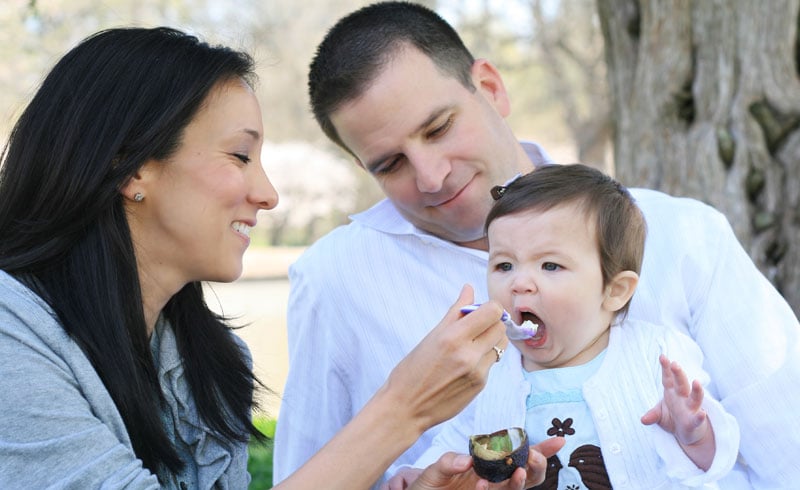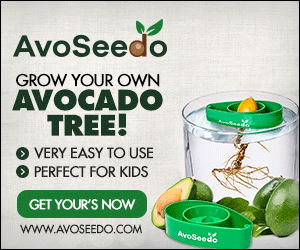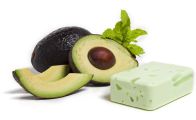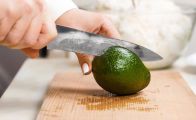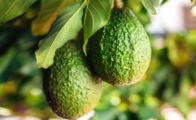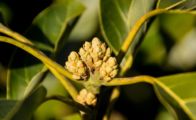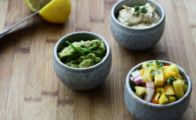Fruit of the Womb
The avocado isn’t just a wonder-food for adults; babies can benefit from eating avocados too! The best part is that avocados already arrive in baby-edible form. Soft, creamy, and perfect for spoon feeding, avocados are deemed one of nature’s “perfect foods.” Rather than feeding infants processed and refined cereals, swap in some delicious avocado as their first meal. 4-6 months old (or potentially 8 months for late bloomers) is a good time to add avocado to a baby’s diet. (Always check with a pediatrician when introducing babies to solid foods. There have been some links between people with Latex allergies being avocado intolerant.)
Good Fat Means Good Future
Full of good fats and high in nutrient content, avocados promote baby’s brain growth and physical development. One serving of avocado contains 8% the daily recommended value for folate, 4% the daily recommended value for fiber, 4% the daily recommended value for potassium, 4% the daily recommended value for vitamin E, and 2% the daily recommended value for iron, all of which are key elements of a good diet. There are also 81 micrograms of lutein and 19 micrograms of beta-carotene. The best part is that avocados are naturally sodium- and cholesterol- free, both things to avoid high doses of in both infant and adult diets. Other vitamins and minerals in avocados are vitamin A, vitamin C, vitamin B2, niacin, pantothenic acid, vitamin B6, phosphorus, magnesium, and calcium.
Avocado
A good way to prepare avocado for a baby is to mash it with other foods such as peaches, pears, bananas, applesauce, and yogurt. Some people do worry about the high fat content of avocados (322 calories and around 30 grams of fat), but the fat in avocados is the good kind of fat: monounsaturated fat. Besides, babies should never be on a low fat diet. Good fat is necessary for developing brains and bodies.
Picking Baby’s First Avocado
To pick out an avocado for baby’s first meal, choose a bumpy, dark green avocado that is firm but does give a bit when gently pushed. When opened, the fruit’s flesh should be a bright shade of green that transitions to pale yellow near the pit.

